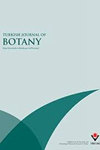Turkish Journal Of Botany SCIE
国际简称:TURK J BOT 参考译名:土耳其植物学杂志
主要研究方向:PLANT SCIENCES 非预警期刊 审稿周期: 较慢,6-12周
《土耳其植物学杂志》(Turkish Journal Of Botany)是一本由Turkiye Klinikleri Journal of Medical Sciences出版的以PLANT SCIENCES为研究特色的国际期刊,发表该领域相关的原创研究文章、评论文章和综述文章,及时报道该领域相关理论、实践和应用学科的最新发现,旨在促进该学科领域科学信息的快速交流。该期刊是一本未开放期刊,近三年没有被列入预警名单。
Turkish Journal Of Botany期刊信息
- ISSN:1300-008X
- 出版语言:English
- 是否OA:未开放
- E-ISSN:1303-6106
- 出版地区:TURKEY
- 是否预警:否
- 出版商:Turkiye Klinikleri Journal of Medical Sciences
- 出版周期:Bimonthly
- 创刊时间:1994
- 开源占比:0
- Gold OA文章占比:0.00%
- OA被引用占比:0.0041...
- 出版国人文章占比:0
- 出版撤稿占比:
- 研究类文章占比:95.35%
Turkish Journal Of Botany CiteScore评价数据(2024年最新版)
| CiteScore | SJR | SNIP | CiteScore 指数 | ||||||||
| 2.9 | 0.363 | 0.811 |
|
名词解释:CiteScore 是衡量期刊所发表文献的平均受引用次数,是在 Scopus 中衡量期刊影响力的另一个指标。当年CiteScore 的计算依据是期刊最近4年(含计算年度)的被引次数除以该期刊近四年发表的文献数。例如,2022年的 CiteScore 计算方法为:2022年的 CiteScore =2019-2022年收到的对2019-2022年发表的文件的引用数量÷2019-2022年发布的文献数量 注:文献类型包括:文章、评论、会议论文、书籍章节和数据论文。
Turkish Journal Of Botany中科院评价数据
中科院 2023年12月升级版
| Top期刊 | 综述期刊 | 大类学科 | 小类学科 | ||
| 否 | 否 | 生物学 | 4区 | PLANT SCIENCES 植物科学 | 4区 |
中科院 2022年12月升级版
| Top期刊 | 综述期刊 | 大类学科 | 小类学科 | ||
| 否 | 否 | 生物学 | 4区 | PLANT SCIENCES 植物科学 | 4区 |
中科院 2021年12月旧的升级版
| Top期刊 | 综述期刊 | 大类学科 | 小类学科 | ||
| 否 | 否 | 生物学 | 4区 | PLANT SCIENCES 植物科学 | 4区 |
中科院 2021年12月基础版
| Top期刊 | 综述期刊 | 大类学科 | 小类学科 | ||
| 否 | 否 | 生物 | 4区 | PLANT SCIENCES 植物科学 | 4区 |
中科院 2021年12月升级版
| Top期刊 | 综述期刊 | 大类学科 | 小类学科 | ||
| 否 | 否 | 生物学 | 4区 | PLANT SCIENCES 植物科学 | 4区 |
中科院 2020年12月旧的升级版
| Top期刊 | 综述期刊 | 大类学科 | 小类学科 | ||
| 否 | 否 | 生物学 | 4区 | PLANT SCIENCES 植物科学 | 4区 |
Turkish Journal Of Botany JCR评价数据(2023-2024年最新版)
| 按JIF指标学科分区 | 收录子集 | 分区 | 排名 | 百分位 |
| 学科:PLANT SCIENCES | SCIE | Q3 | 148 / 265 |
44.3% |
| 按JCI指标学科分区 | 收录子集 | 分区 | 排名 | 百分位 |
| 学科:PLANT SCIENCES | SCIE | Q3 | 158 / 265 |
40.57% |
Turkish Journal Of Botany历年数据统计
影响因子
中科院分区
Turkish Journal Of Botany同类期刊
-
植物生理学
Plant Physiology
中科院 1区 JCR Q1

-
国际分子科学杂志
International Journal Of Molecular Sciences
中科院 2区 JCR Q1
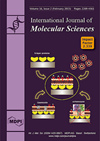
-
纳米生物技术杂志
Journal Of Nanobiotechnology
中科院 1区 JCR Q1
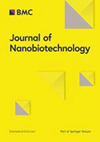
-
植物科学前沿
Frontiers In Plant Science
中科院 2区 JCR Q1
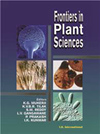
-
分子生物学的当前问题
Current Issues In Molecular Biology
中科院 3区 JCR Q3
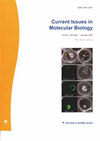
-
氧化医学和细胞寿命
Oxidative Medicine And Cellular Longevity
中科院 2区
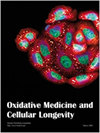
-
世界微生物学与生物技术杂志
World Journal Of Microbiology & Biotechnology
中科院 3区 JCR Q2

-
生物信息学
Bioinformatics
中科院 3区 JCR Q1
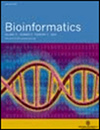
免责声明
本站合法持有《出版物经营许可证》,仅销售经国家新闻出版署批准的合法期刊,不是任何杂志官网,不涉及出版事务。本站仅提供有限咨询服务,需要用户自己向出版商投稿且没有绿色通道,是否录用一切以出版商通知为准。提及的第三方名称或商标,其知识产权均属于相应的出版商或期刊,本站与上述机构无从属关系,所有引用均出于解释服务内容的考量,符合商标法规范。本页信息均由法务团队进行把关,若期刊信息有任何问题,请联系在线客服,我们会认真核实处理。 若用户需要出版服务,请联系出版商:TUBITAK SCIENTIFIC & TECHNICAL RESEARCH COUNCIL TURKEY, ATATURK BULVARI NO 221, KAVAKLIDERE, ANKARA, TURKEY, 00000。
工信部备案:蜀ICP备18023296号-3 川公网安备:51010802001409 出版物经营许可证:新出发蓉零字第CH-B061号 统一信用码:91510108MA6CHFDC3Q © 版权所有:四川好花科技有限公司
免责声明:本站持有《出版物经营许可证》,主要从事期刊杂志零售,不是任何杂志官网,不涉及出版事务,特此申明。 电话:400-888-7502
